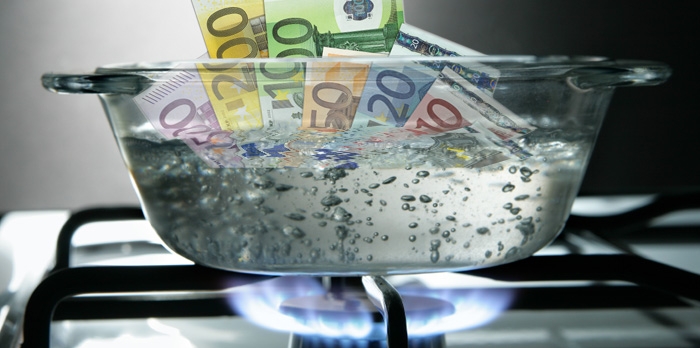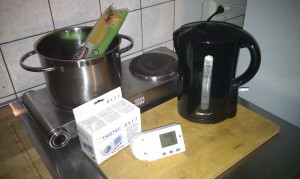
On our German Facebook page, we just ran a little competition in which we asked our fans to post their best tips for saving energy. In the course of this contest, they shared a lot of useful advice and proved that there are quite some things you can do to save not only precious energy from being wasted, but also a nice amount of money from being spent in vain. A lot of useful, amusing and surprising tips were collected, but then a little dispute emerged between two of our fans. The point of issue was:
Is it energy-efficient to boil the water for pasta in an electric kettle before proceeding to cook the noodles on the stove?
The question is whether this really saves energy (because an electric boiler is not only faster, but also needs less energy) or maybe even consumes more (because two single appliances must be heated). Since we were the ones who had raised the question in the first place, we thought it is kind of our responsibility to clear up this confusion. Or maybe we were only looking for a good excuse to meet up with some colleagues for a little reunion outside the office… and after all, we at Trotec have the means to find the solution to this dilemma. That is, we have the right equipment: The BX 11 is a handy little device that allows you to measure the energy consumed by any electrical device you decide to plug in – and even gives you the exact amount of money spent.
So we arranged to meet for a collective pasta-cooking (and not to forget: eating) with the whole social media team here at Trotec. The set-up for our experiment was as follows:

1 Electric kettle, 1 hotplate, 1 BX11 Energy cost meter, 3 l of cold water and – of course – a lot of spaghetti and pesto.
In the first step, we boiled the water on the hotplate and then cooked the spaghetti for 8 minutes – al dente as any Italian mamma would recommend. This took us as much as 38 minutes and therefore was a hard test on our patience – after all it had been a long day and we were all hungry. Our calculations revealed that, assuming an electricity rate of 20 cents per KW/h, cooking our pasta the traditional way cost 18 cents.
In the second course we did the same thing, but this time boiled the water in the electric kettle before cooking the spaghetti on the stove. The same amount of water, the same cooking time but quite different results: This method was not only much faster (only 22 minutes altogether), it also consumed considerably less energy. 13 cents, to be precise, which is 5 cents less than in the first case.
So, what does this little experiment tell us? Well, at least in my case it saves quite some time and money to use an electric kettle when cooking pasta. To what extent you can apply these results to a normal stove or even a gas-powered stove really goes beyond my grasps of physics, but I think the tendency is clear: The kettle is our indisputable winner in terms of energy-efficiency!
… If you have any further wishes or suggestions for us to test for you – let us know! Our English Facebook page is the ideal place for you to share your thoughts. And who knows? Maybe the idea for our next experiment will be yours …

